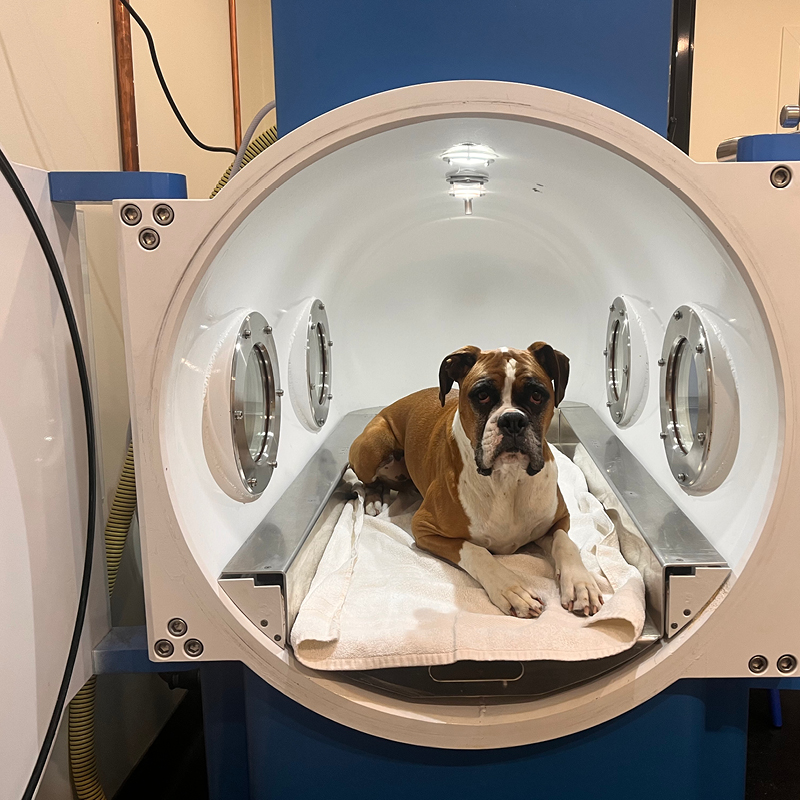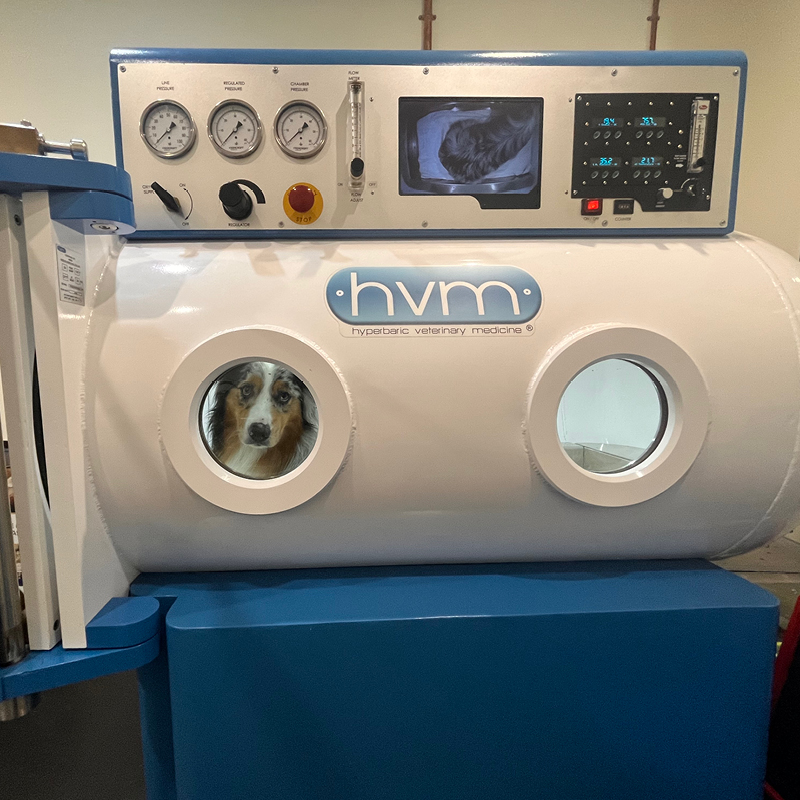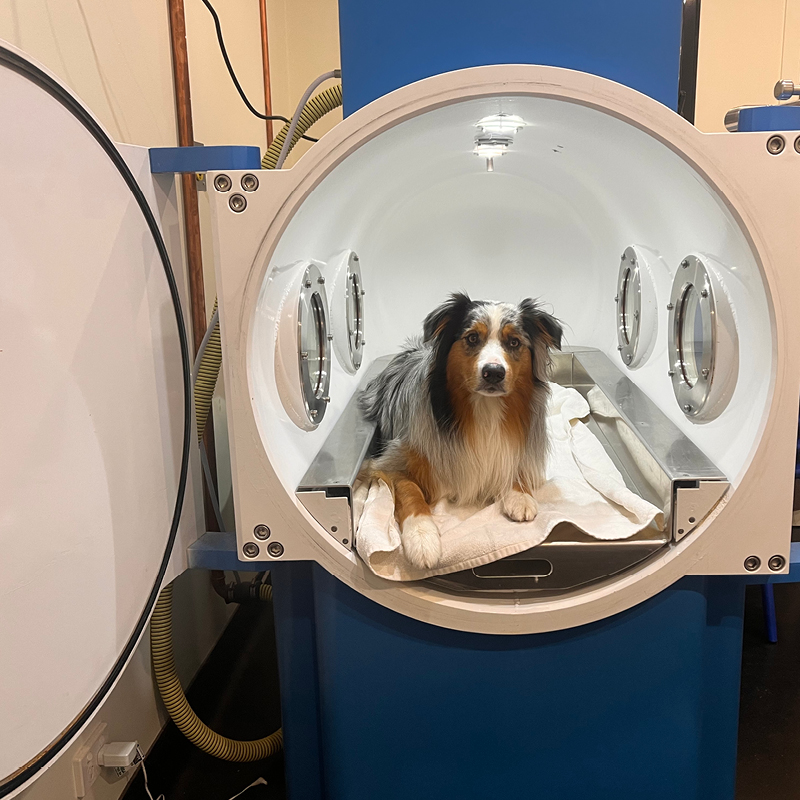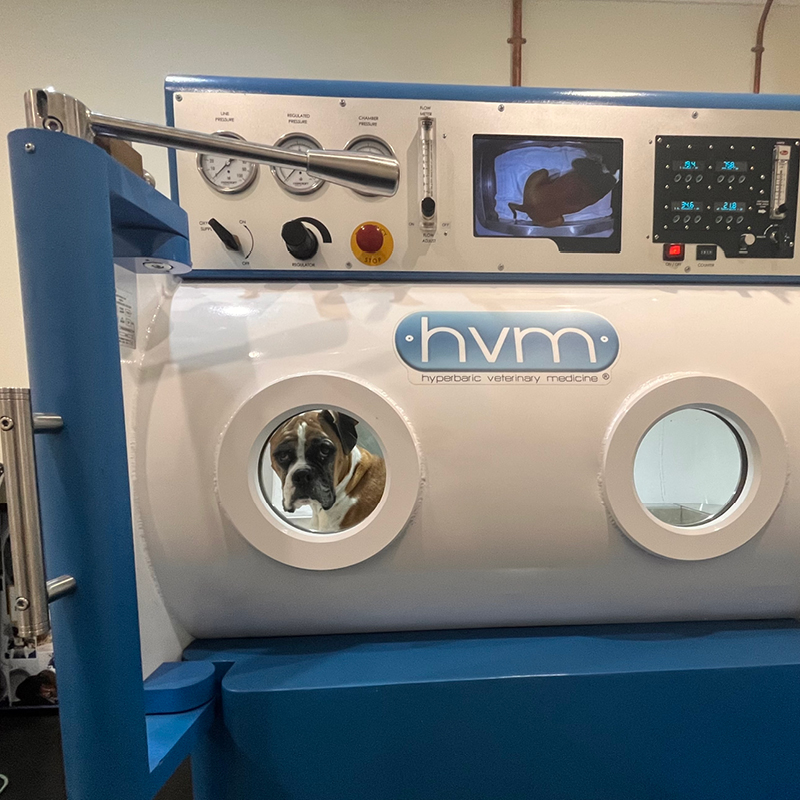Hyperbaric Oxygen Therapy
Hyperbaric oxygen therapy (HBOT) is a non-invasive treatment that uses 100% oxygen at high pressure to repair damaged cells and tissue, reduce inflammation and more. While in the hyperbaric chamber your pet’s body is able to absorb 15 times more oxygen than it would under normal circumstances, accelerating healing and repair.
The patient is placed into the hyperbaric chambers which has been specifically designed for small animals. Closely monitored by our highly trained staff, the chamber reaches a maximum of 2 atmospheres and delivers 100% oxygen for 1 hour. Patients are not required to undergo any sedation and are closely monitored for any signs of stress during treatment. In addition all chambers operators are tested, certified and follow strict guidelines, ensuring your pet receives optimum care.
HBOT can benefit the following conditions:
- Osteoarthritis
- Muscle strains
- Spinal conditions
- Skin conditions
- Kidney disease
- Snake bites
Stem Cell Therapy
Compared to the options of invasive surgery or expensive long-term medications, Stem Cell Therapy is the preferred choice for many pet owners. It can be used in the treatment of a wide range of conditions including:
- Osteoarthritis
- Ligament injuries
- Tendon injuries
- Burn wounds
- Open wounds
- Bone grafts
- Certain spinal conditions
What are Stem Cells and where are they found?
Stem cells are your pet’s own repair cells. Dividing constantly to replace damaged cells, they have the ability to develop into different types of cells during their early stage of development to become part of a cell with a specialised function such as a muscle cell, a blood cell, or a brain cell. Given their unique regenerative abilities, stem cells offer great potential for treating disease.
During a stem cell procedure, stem cells are extracted from the fat tissue or bone marrow where they are highly concentrated. They are then injected into the treatment area in a concentrated form where they will aid regeneration of the surrounding tissue types including bone, cartilage, tendon, ligament, muscle and nerve tissue.
Is Stem Cell Therapy right for my pet?
Before being able to advise if this treatment is a suitable option for your pet, our highly experienced vets will need to accurately diagnose your pet’s condition.
What conditions can be treated?
Backed by more than a decade of clinical research, Shockwave therapy can be used to decrease lameness, increase mobility and relieve pain in dogs with:
- Osteoarthritis
- Tendon and ligament injuries
- Wounds
- Bone fractures
- Back Pain
- Shoulder instability
What can I expect from an average treatment?
An average treatment lasts approximately 10 to 15 minutes. Because we are dealing with high-energy soundwaves and deep healing, your dog will require a short acting sedative. Once sedated the vet will shave/clip the area(s) to be treated to ensure the sound waves are not interrupted. From there the vet will sleet the number of pulses for a specific area and deliver the pulses.
What to expect after treatment
Your pet should not partake in strenuous activity after receiving shockwave therapy, even if they seem to be feeling better. It takes time for the biological responses in the body to take effect and begin healing. The specific amount of time required to heal varies from case to case and you will be advised of this by your vet. Many times, one treatment is sufficient for long term healing, however depending on the indication, your vet may recommend a second or even third treatment a few weeks apart.
Is Shockwave Therapy different to Laser Therapy?
Shockwave therapy uses sound energy, whereas Laser therapy uses light energy. Shockwave therapy is FDA approved and backed by more than 10 years of research in veterinary and human medicine. In addition, Shockwave therapy penetrates deeper than a laser requiring significantly less treatments (1-3 versus 10-15 for Laser therapy) to any given injury, with no risk of burns.






